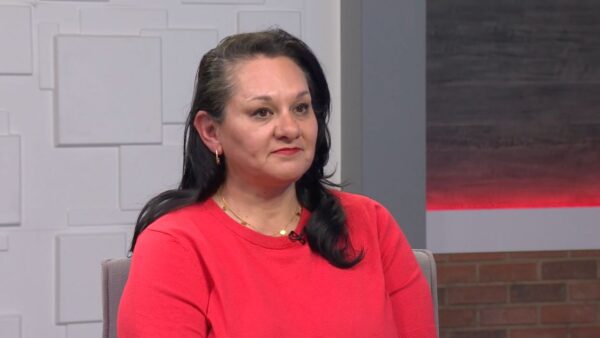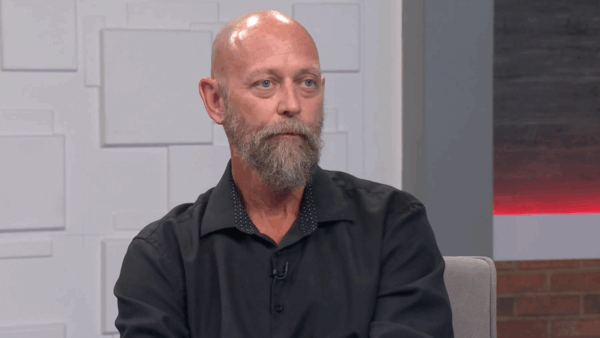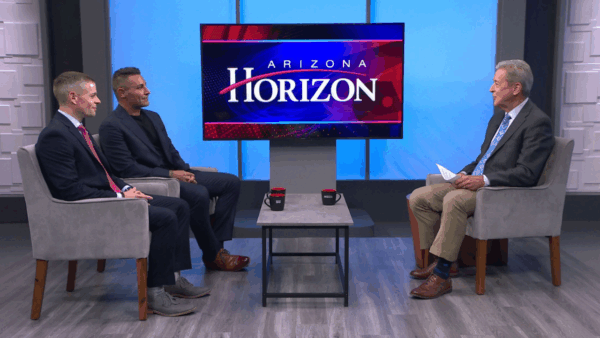The Arizona Department of Transportation is considering using a wrong-way driver radar alert system to warn other drivers. ADOT state engineer and deputy director of transportation Dallas Hammit will tell us more.
TED SIMONS: Coming up next on "Arizona Horizon," a proposed wrong-way driver warning system is in the works. Also tonight, we'll learn about an academy to train educators to teach sustainability. And we'll hear about a recent state innovation challenge winner. Those stories next on "Arizona Horizon."
VIDEO: "Arizona Horizon" is made possible by contributions from the Friends of Eight, members of your Arizona PBS station. Thank you.
TED SIMONS: Good evening, and welcome to "Arizona Horizon," I'm Ted Simons. Arizona's jobless rate fell to 6% last month, down .2% a month. The national rate for April was lower still, holding at 5.4%. Arizona's private sector gained only 300 jobs last month, the federal government adding 1400 mostly seasonal positions connected to park services. Also the state lost over 4,000 jobs in utilities, transportation and trade which includes retail. The Arizona Department of Transportation is considering using a wrong-way driver radar alert system. ADOT state engineer and deputy director of transportation Dallas Hammit joins to us explain the proposed system. This thing's up and operational, isn't it?
DALLAS HAMMIT: We got it going about two months ago. We started testing. We have two interchanges theory Peoria where we actually have radar decks. If a vehicle is going down the ramp the wrong way, the radar detects it, puts a message back to our traffic operations center where we can alert drivers through variable message boards as well as law enforcement.
TED SIMONS: The goal obviously for a faster alert here. The message boards are operational here on this particular situation?
DALLAS HAMMIT: These are the ones you see every day, the big overhead message boards. Our operators can put the alert Realtime, as soon as they get the message that there is a wrong-way driver we get the message out warning the folks that are oncoming.
TED SIMOSN: How quickly does the radar click?
DALLAS HAMMIT: In seconds.
It's really realtime information we're getting.
TED SIMONS: Is the study itself still in the early phase? I know you have something going on out there but are you still studying it?
DALLAS HAMMIT: We do. In 2014 we had those crashes, we decided we can't wait for the second phase of our study to get completed. We knew there was technology. We talked to other states and we wanted to have a two-prong approach. We want to finish the study, look at all research. But we knew there were techniques such as radar and we wanted to implement that immediately.
TED SIMONS: What did you hear from the other states?
DALLAS HAMMIT: We heard different things. Some states like Texas use larger signs. We have installed at 51 intersections over 500 signs. They are almost 500% larger signs that would -- a driver going the wrong way would be alerted, don't turn here, this is the wrong way. We also put arrows that when you're going and see the arrows pointing the other way, that would alert you, hey, you're not going the right direction.
TED SIMONS: My impression of those signs, it would say wrong-way driver warning or something. But you're saying these signs actually warn the driver, you're going the wrong way.
DALLAS HAMMIT: They are printed signs, they are not a message. Wrong way sign, do not enter.
TED SIMONS: So that's what we saw with the wrong way signs. But the electronic ones are for us. Watch out.
Wrong way driver approaching.
How big of a problem is wrong-way driving? Seems like a year ago we were seeing an awful lot of this.
DALLAS HAMMIT: We've seen a number of them. In 2013 we had only six wrong-way fatal crashes. We had around 20 total wrong-way crashes. In one weekend we had three and the next weekend we had a fourth fatal in May of 2014. That's where we really started to move forward and looking for lots of different alternatives.
TED SIMONS: When you started moving forward I'm sure studies were done, research was conducted. Why do people drive the wrong way?
DALLAS HAMMIT: The biggest is impairment. Out of all wrong-way crashes about 68% of the drivers are impaired. 80% of the wrong-way fatal crashes the driver he is impaired.
TED SIMONS: And what time of day or night do they usually occur?
DALLAS HAMMIT: Generally very late night, early morning, one to 2:00 a.m.
TED SIMONS: Are there certain roads or freeways that seem more susceptible, that might be a little more qualify confusing than others?
DALLAS HAMMIT: Well, we've seen them on the you are been interstates as well as the freeways. The challenge is where do they get onto the freeway. They are called ep once on the freeway. That's been a challenge of stopping them, knowing exactly what exit or ramp they got onto.
TED SIMONS: Correct me if I'm wrong here, this new system kind of suggests you can't necessarily stop these wrong-way drivers but you can warn others. Or can you stop these wrong-way drivers?
DALLAS HAMMIT: We are detecting them and warning others and alerting law enforcement almost at realtime.
TED SIMONS: Alerting law enforcement, that's a way to stop them, isn't it?
DALLAS HAMMIT: Law enforcement could be dispatched and get to them much sooner than in the past.
TED SIMONS: You've installed them in a couple of areas. What have you seen so far?
DALLAS HAMMIT: Right now they are on the 101 in the neighborhood of Peoria. We have two interchanges out there. Right now I have not seen, once you put it up, there's over 100 interchanges in Phoenix and they haven't had a wrong way detected. Once we close the ramp and do that, they work and alert or traffic operations center. We're doing that. We're also looking at another technology very similar but uses microwave technology, similar to radar. We are going install those on three enter changes this summer. They are different manufacturers, we want to see whose works better. They will alert the operations center. These will also light up a sign that says wrong way with blinking lights as the vehicle approaches.
TED SIMONS: I think we have video of testing being done I think on 101 in Peoria. How do you test wrong-way drivers on a freeway? Do you shut down the freeway?
DALLAS HAMMIT: Since it's on the ramp, we can close it late at night when there's very Allow low volume and run a vehicle the wrong way. It's a controlled setting, no one's in danger.
TED SIMONS: A lot of these folks are driving pretty fast, still no problem with the radar?
DALLAS HAMMIT: We can detect them.
TED SIMONS: Last question on this before we let you go: Biggest challenge in dealing with this problem.
DALLAS HAMMIT: I think the biggest challenge is alerting the public that impairment is not accept annual. You cannot drive -- drink and drive. Transportation is personal for us at ADOT. For me, I've got a 16-year-old on the road driving and I want them to get home safe. We want everyone to get back safely. TED SIMONS: Good luck with the test. It's hard to say it's been a success so far, you haven't had anyone driving up there. It sounds like it's going work. We'll try to get you guys back once we get more information on this. Thanks for stopping by.
DALLAS HAMMIT: Thank you for having me.
Dallas Hammit: ADOT State Engineer and Deputy Director of Transportation























